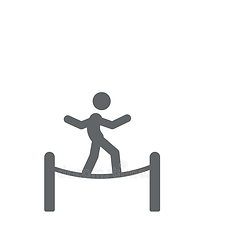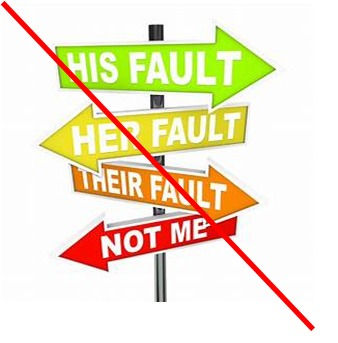
2 Januari 2025
Beeing a leader or a coworker is a constant cooperation / balancing act with others
In my experience one of the more important areas to address is the balance between feeling and logic,
in my vocabulary Heart and Mind

Heart and Mind Management provides Assessment, Coaching, Training, Workshops supporting in management and organisation effectiveness
We updated the homepage on 2 January 2025
I have recorded spoken presentations on the following subjects and launched them, and also updated the homepage


Confidence
What is Confidence:
the belief or trust in one's abilities, qualities, judgement or the certainty of an outcome. It is a psychological state that influences how we perceive ourselves and our capacity to handle situations, achieve goals or make decisions.
The Key Aspects of Confidence:
Self-belief (to believe in yourself)
Self-assuredness (to be certain of yourself)
Assertiveness (to communicate with Confidence, Respect, Clarity and Control)
Resilience (the ability to recover quickly)

Self-belief (to believe in yourself)
This is the trust in one's own abilities or skills. People with high self-confidence believe they can succeed in various tasks, whether personal or professional.

Self-assuredness (to be certain of yourself)
Is a quality that reflects a person’s confidence in their own abilities, decisions and value.
Trust their own judgement and feel comfortable expressing their opinions or taking action

Assertiveness (to communicate with Confidence, Respect, Clarity and Control)
The ability to express one’s thoughts, feelings, needs and desires in a direct, honest and respectful way

Resilience (the ability to recover quickly)
The ability to bounce back from setbacks without losing self-esteem.

There are several types of confidence, each playing a unique role in different aspects of life.
Here are some key kinds of confidence:
1.Self-Confidence
2.Social Confidence
3.Situational Confidence
4.Physical Confidence
5.Emotional Confidence
6.Intellectual Confidence
7.Overconfidence
8.Low Confidence
9.Value and beliefs Confidence
How do you nurture develop and build confidence. Building confidence is a gradual process that involves both internal mindset shifts and external actions.
Here are several strategies to help boost your confidence in different areas of life:
1.Set Achievable Goals
2.Focus on Strengths
3.Learn from Failures
4.Develop Competence through Practice
5.Challenge Negative Thoughts
6.Step Outside Your Comfort Zone
7.Maintain a Growth Mindset
8.Take Care of Your Body and Mind
9.Surround Yourself with Positive Support
10.Celebrate Small Wins
11.Fake It Till You Make It
12.Seek Feedback and Improve

With a good Confidence:
You believe or trust in your abilities, qualities, judgement or the certainty of an outcome. It is a psychological state that influences how you perceive yourself and your capacity to handle situations, achieve goals or make decisions.

Reflection
Reflection can be done as an individual or in a group (doing it in a group increases the possibility to find different perspectives).
Reflection can can be done through a meeting, writing, conversation or quiet contemplation.
It's a valuable practice for personal and professional development, helping you gain deeper insights, make better decisions and grow as an individual.
Reflection
1.Remember and recall an experience or an event
2.Describe the moment in detail.
3.Reflect on your feelings and experience during that moment
4.Evaluate the experience
5.Analyse
6.Learn the key insights
7.Use the knowledge

By using reflection regularly, you can create a cycle of continuous improvement, leading to better decision-making, stronger relationships, and personal and professional success.

Problem Solving Methodologies
When we see a problem we tend to look under the lamp and to jump into an early conclusion of how to solve it
It feels good to do something about it quickly
but give it a little time and thinking to really solve the problem with a suitable solution to ensure that the problem will not reoccur
Core Principles
- Concentrate on solving reoccurring root causes rather than solving just symptoms
- Do not ignore the importance of treating symptoms for short term relief
- There can be, and are, often more than one root cause
- Analyse using the 5 W and H method (Ask Who?, What?, Where?, When?, Why?
And How? Did the problem show up?)
- Be systematic and look for evidence to back up the found root cause
- Try to find a way to solve the root cause to prevent it from appearing again
When performing a Root cause analysis it is important to take a comprehensive and holistic approach and to use all the knowledge available in the entire organisation (Cross functional)
Problem Solving Methodologies
- Root Cause
- Change analyse
- Fish bone analysis
- A3 method
- Trial and error

Root Cause
5 W + H
- Who does it concern?
- What happened?
- When did it happen?
- Where did it happen?
- Why did it happen?
- How did it happen?
Who to blame is not important and does nothing for the actual problemsolving

Change analyse
Analyse the changes that have led up to the problem
- Looking at a longer period of time leading up to the problem
- This is effective when there are a number of root causes

Fish bone analysis
A way to analyse root causes is the Fish bone analysis (Ishikewa diagram analysis), where you start with the problem and work your way back through different possible causes of the problem
Categories to consider in the analysis
- Machine (equipment, technology)
- Method (process)
- Man/Mind(physical or knowledge)
- Measurement (inspections)
- Management /money power (leadership)
- Maintenance
- Product/Service
- Price
- Promotion(Marketing)
- Process (System)
- People (Personal)
- Physical evidence
- Performance
- Surroundings (Environment)
- Suppliers
- Skills
A3 method

A way to document
1.Define the problem
2.Current state
3.Wanted State
4.Analyse the root causes
5.Generate and test countermeasures
6.Implement and sustain improvements (implementation plan)
7.Follow up results
8.Standardisation
9.Lessons learned

Trial and error
A problem solving or learning method that involves experimenting with different approaches until the right one is found.
While trial and error can be effective, it may not be the most efficient or practical method in all situations, especially when the cost of errors is high or when there are alternative, more systematic problem solving approaches available.
Variation and selection is a very powerful method
1.Select a solution
2.Create variation of this solution
3.Test what works and what does not
4.Throw the solutions not working away
5.Create variations around the solutions that work
6.Test what works and what does not
After 30 generations you have a stable solution! When it can be used it is quite powerful but in a lot of cases it takes to long time ore cost to much to apply.

Development plan for each person
There is a strong emphasis on continuous learning and development, with opportunities for skill enhancement, career growth and personal advancement. The organisation invests in training, mentorship and professional development programs.
Is developed by the Coworker together with the Manager

Development Plan contains targets for Heart and Mind to include the complete person and can be seen as a contract between the individual and the company


A yearly follow up meeting is performed
1.Discuss how you have delivered on the Targets from last year
2.How are your feeling in the group?
3.Are there any obstacles in your work?
4.Can I help you in any way?
5.The targets for next year
6.How do you want to develop yourself to become the best version of yourself?
7.What is the plan for the individual (from the manager’s perspective)
8...
9...
Areas to Keep in Mind When Developing a Person
1.Education and Learning
2.Skill Development
3.Professional Development
4.Goal Setting
5.Health and Well-being
6.Networking and Relationship Building
7.Reflection
8.Challenges and Risk-Taking
9.Volunteering and Community Engagemen
10.Time Management
11.Continuous Feedback
12.Financial Literacy
Remember that personal development is a dynamic and ongoing process. It involves a combination of self-awareness, continuous learning and intentional efforts to become the best version of yourself.
Planned are 4 workshops during January 2025
No cost for participating
No limit in numbers attending the meetings

Set Based Engineering
08/1 2025 kl 10.00-10.30
08/1 2025 kl 18.00-18.30

Core Human Values
15/1 2025 kl 10.00-10.30
15/1 2025 kl 18.00-18.30



















